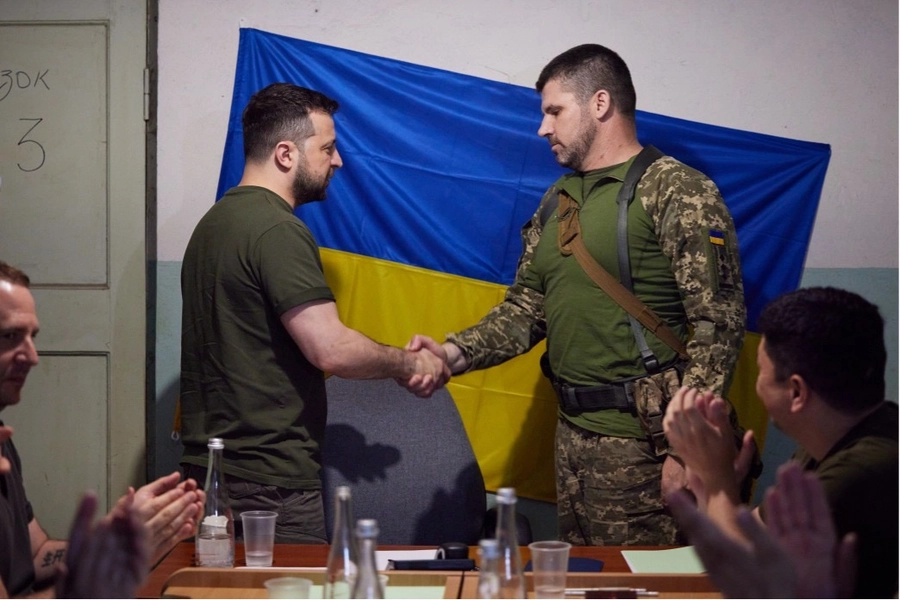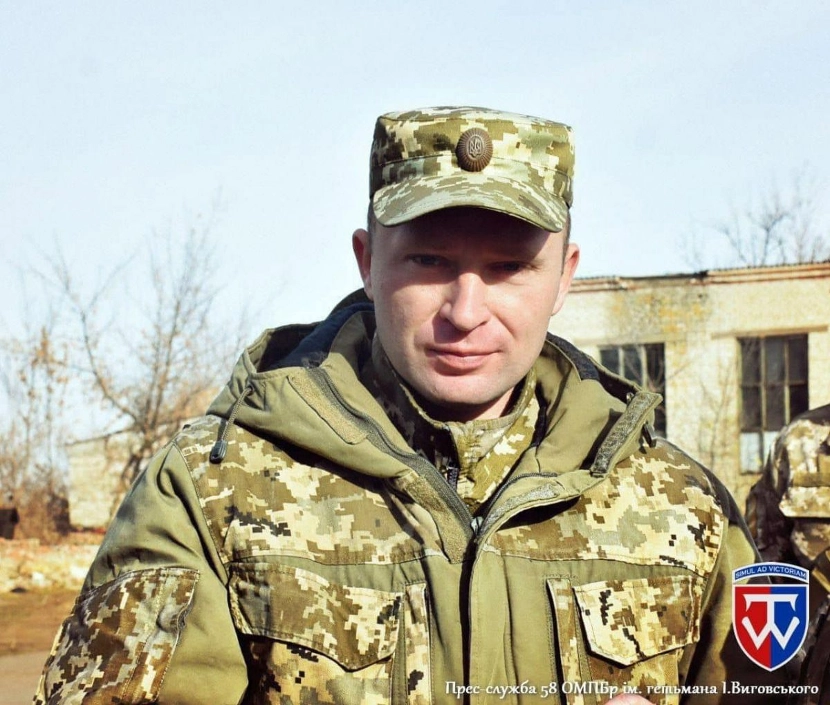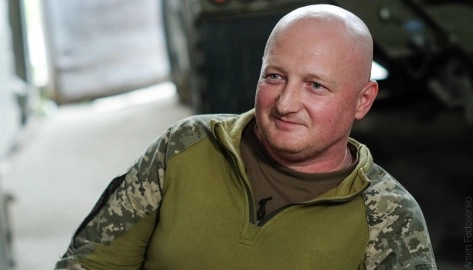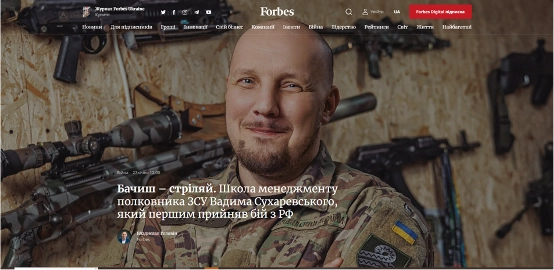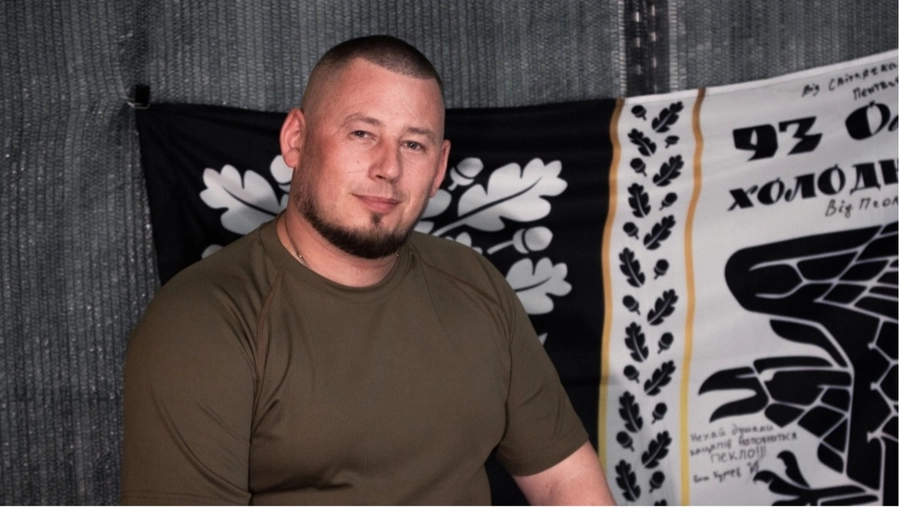If President Volodymyr Zelensky gets his way, his Thursday decision to sack veteran General Valery Zaluzhny from command of Armed Forces of Ukraine (AFU) won’t just switch out the man in charge, but unleash generational change across the army’s top leadership.
In a nationally televised address, Zelensky told viewers Zaluzhny served loyally for two years and in that time a massively outgunned AFU fought the Russian army to a stand-still, for which the nation was grateful.
JOIN US ON TELEGRAM
Follow our coverage of the war on the @Kyivpost_official.
The next Ukrainian army commander will carry on that work with a fresh outlook and renewed energy, Zelensky said.
The man picked by Zelensky to replace Zaluzhny – Oleksandr Syrsky – is well known in Ukraine for leading successful operations in defensive fighting around Kyiv in Feb.-Mar. 2022, and for near blitzkrieg offensive catching the Russian army flat-footed east of Kharkiv in Sep. 2022.
Syrsky’s reputation among front line troops and officers – whom he visits regularly – is that he is a demanding, regular army man firmly believing in troop discipline, deep fortifications, detailed planning, using surprise in attacks, and massed artillery whenever possible.
Srysky is as much a skilled technician and boss, laser-focused on results and accountability, as he is a reformer with the on-the-ground small unit experience to understand what works best on the modern battlefield and then implement it across an entire army, military analysts and professionals say.

US VP Says Confident Zelensky Will ‘Eventually’ Talk Peace
Major Maksym Zhorin, a seasoned field officer severely wounded in the 2022 Siege of Mariupol and currently serving as vice commander in the Kyiv-recruited 3rd Assault Brigade, in a Wednesday interview spoke for many in the AFU when asked by journalist Natalia Moseychuk his view of Zaluzhny and his replacement by Syrsky.
“There should be growth. Constant movement from the lower ranks towards higher… I think that, more or less, they are from the same school. Zaluzhny and Syrsky. I think what they will do is win time for others to rise up in the ranks. For instance, those officers he [President Zelensky] named,” Zhorin said.
Zelensky singled out by name five officers, all at least 20 years junior to Col.-Gen. Syrsky, as new generation leaders the top of the AFU needs: Brigadier Generals Andriy Hnatov, Myhailo Drapaty, Ihor Skybiuk; and Colonels Pavlo Palesa and Vadym Sukhevsky.
The Ukrainian leader said they will work directly for Syrsky – without making their actual future jobs clear.
“They will serve under the command of the most experienced Ukrainian commander [Syrsky],” Zelensky said.
Effectively unknown outside Ukraine, the five officers at home are known fairly well as successful battle commanders fighting in a hot war against Russia for most of their professional lives.
All cut their teeth in combat, in front-line fighting, as junior officers during Russia’s first invasion of Ukraine in 2014. All have appeared in Ukrainian media, some frequently.
All but one officer commanded a combat brigade containing 2,000-3,000 men and women, and the unit succeeded on the battlefield.
The fifth leads a multi-brigade parent formation. Almost all were innovators and either the first or among the first to employ new battle tactics used across the AFU today.
Said Zhorin of the five: “These are people, really, of a new generation. These people are in their 40s. They are still growing, they are still developing.
“But what’s really important is that they have real experience, which they gained on the battlefield. That’s extremely important.
“You can’t replace that with anything, not any kind of school, institute, in any country in the world.”
- Brigadier General Andriy Hnatov served as a senior staff officer and then commander of 36th Marine Brigade, one of the AFU’s best-known combat units for bitter fighting in the 2022 Siege of Mariupol, the 2023 Battle of Bakhmut and as a lead formation in a 2023 amphibious crossing of the Dnipro River.
Hnatov’s and his staff’s planning for the operation and its logistical support, using instead of conventional barges or bridging dozens of small boats, across one of Europe’s most sizable waterways. Thus far elements of four Marine brigades have rotated in and out of the bridgehead.
Photo:Ukrainian President Voldomyr Zelensky shakes hands with Andriy Hnatov, March. 20 2023 image published by NikVesti. At the time Hnatov commanded 36th Marine Brigade in fierce urban battles in the Donbass city Bakhmut.
Few officers within the AFU have more experience in urban warfare than Hnatov. For practical purposes, none have more experience in cross-water infantry assaults and using drones to support a bridgehead.
- Brigadier General Myhailo Drapaty has commanded of Joint Forces Kherson since the start of the war. His first job was constructing ad hoc defensive lines in the early days of Russia’s second invasion of Ukraine, following a Kremlin break-through from Crimea and initially weak Ukrainian forces around the cities Kherson and Mykolaiv.
Under his command Ukrainian troops in November 2022 recaptured Kherson, the most sizable Russian-occupied city liberated in the war thus far. In 2023 Kherson became a prime target for Russian missile bombardments, and Drapaty’s command became a bulwark of Ukraine’s strengthening air defense network.
Photo: Myhailo Drapaty, currently commander of Joint Forces Kherson. Drapaty was a key planner of Ukraine’s amphibious crossing of the Dnipro River in Oct. 2023. Publicity photograph from 58th Brigade.
In October 2023 his regional command oversaw the launch of an amphibious assault over the Dnipro River. During Russia’s first invasion of Ukraine, Drapaty fought extensively as a company, battalion and brigade commander. He was one of the first AFU commanders to lead troops against regular Russian army units in pitched battles.
-
Brigadier General Ihor Skibyuk has commanded 80th Air Assault Brigade, one of the AFU’s standout formations, since the beginning of Russia’s second invasion of Ukraine. A paratrooper, Skibyuk joined the Lviv-headquartered unit in 1998 and served in every command position from platoon leader to brigade commander.
The 80th traces its history to an elite Soviet-era airborne unit. One of Skibyuk’s first battles, as a junior officer, ironically took place in 2014 fighting against Russian army paratroopers in battles in Luhansk region. In May 2022, during Russia’s second invasion of Ukraine, the 80th Brigade fought a series of battles against elements of Russia’s 5th Guards Tank army, which were attempting to cross the Siviersky Donets River and envelop the Donbas cities Severodonetsk and Lysychansk.
Ukrinform photograph of Ihor Skybiuk, commander of 80th Separate Air Assault Brigade. He was likely the first Ukrainian brigade commander to fight a battle with massed NATO artillery in support; it was a success.
The attacks were cut to pieces thanks to NATO-standard 155mm howitzers supporting 80th Brigade defenses. It was the first major use, in the Russo-Ukrainian war, of massed Western artillery fires against a Russian army attack. Skibyuk and the 80th have gone on to fight in practically all sectors of the front. In September 2022 the 80th spearheaded a counteroffensive liberating most of Kharkiv region. By reputation the brigade is an elite formation and one of the AFU’s hardest-fighting units.
-
Colonel Vadym Sukharevsky - An alumnus of the 80th Air Assault, Sukharevsky was a staff officer in a Marine unit in the southern sector at the outset of the war, and in March was appointed to command the 59th Motorized Brigade, a formation badly shaken up by massed Russian tank and artillery assault heading north from Crimea.
Advertisement
According to media accounts from the time, some later confirmed by Kyiv Post on the ground, Sukharevsky pulled the 59th together by forcing sometimes-panicked troops to dig in and making junior commanders enforce the rule. In an account to Forbes magazine, Sukharevsky recalled anger and resistance by soldiers, before they learned Russian attacks would break up if they hit organized defenses.
Photo: Screen grab from 2023 Forbes Ukraine profile of 59th Brigade commander Vadym Sukharevsky. Originally a paratrooper, once the war started he pulled a shattered brigade back together, and then became one of the first brigade commanders anywhere, ever, to really mass FPV drones in support of his formation.
In 2023 the 59th was one of the first formations in the AFU to organize an ad hoc strike drone unit, and probably the first brigade, in history, ever, to turn to strike drones as a real alternative to conventional artillery.
By late 2023 and early 2024 drone teams subordinate to the 59th were dominating skies in the Kherson sector, on some days hitting Russian positions and troops with hundreds of drone-delivered explosives a day.
-
Colonel Pavlo “Hunter” Palisa - His father a career Soviet officer, and at 39 the youngest of the five officers singled out by Zelensky. At the outset of Russia’s second invasion of Ukraine Palisa was an exchange foreign officer student studying at the US Army Command and General Staff College at Ft. Leavenworth. He broke off his studies and returned to lead an assault regiment fighting in the Donbas sector.
The unit, 5th Kyiv Assault Regiment, was very first formation formed in the AFU tailored to assault and capture Russian fortifications and entrenchments. In 2023 he took command of 93rd Mechanized Brigade, a seasoned formation that for months was the lynchpin of fierce Ukrainian defenses holding the city Bakhmut.
Photo: Pavlo “Hunter” Palisa, commander of 93rd Mechanized Infantry Brigade. Under his command the 93rd held the city Bakhmut for some two months against Russia’s Wagner mercenary group.
In a recent video interview, he said the key to success for infantry in close-in fighting is clear instructions, proper equipment, and thorough training.
You can also highlight the text and press Ctrl + Enter



